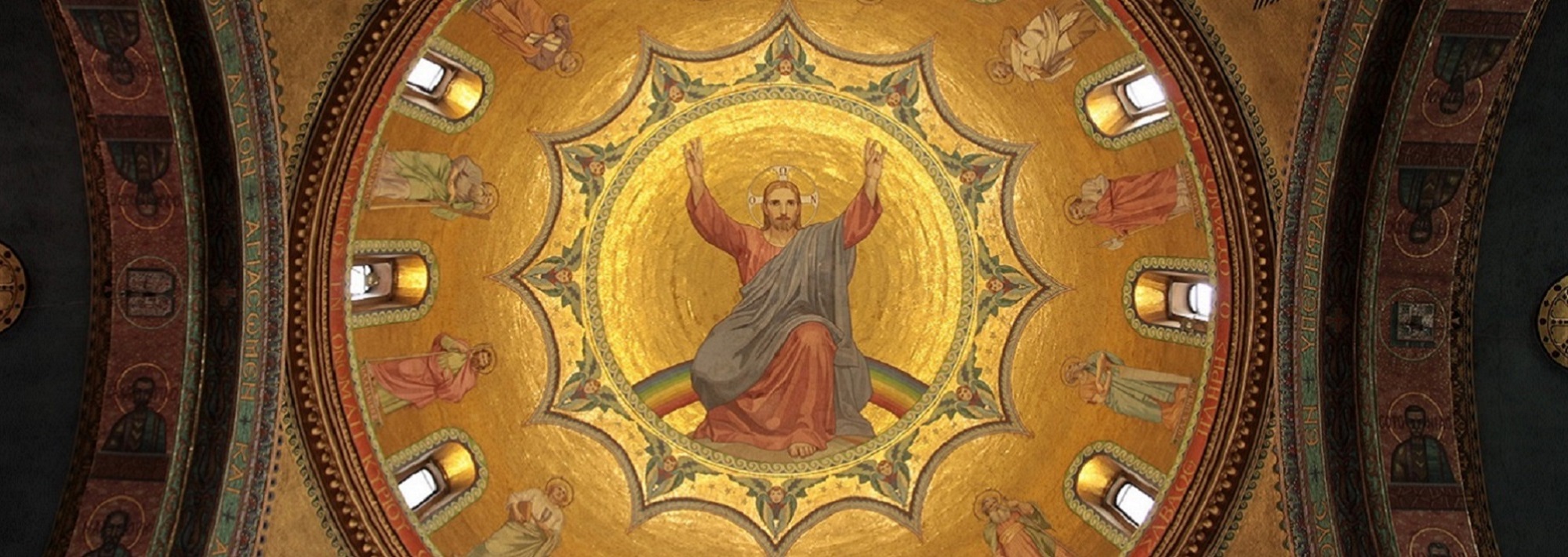Since its origins the Cathedral has always had a polyphonic choir for the celebration of the Divine Liturgy and other major Services, as well as the traditional Byzantine chant. The choir today is probably in the unique position of being the longest established Greek Orthodox polyphonic choir in Western Europe.
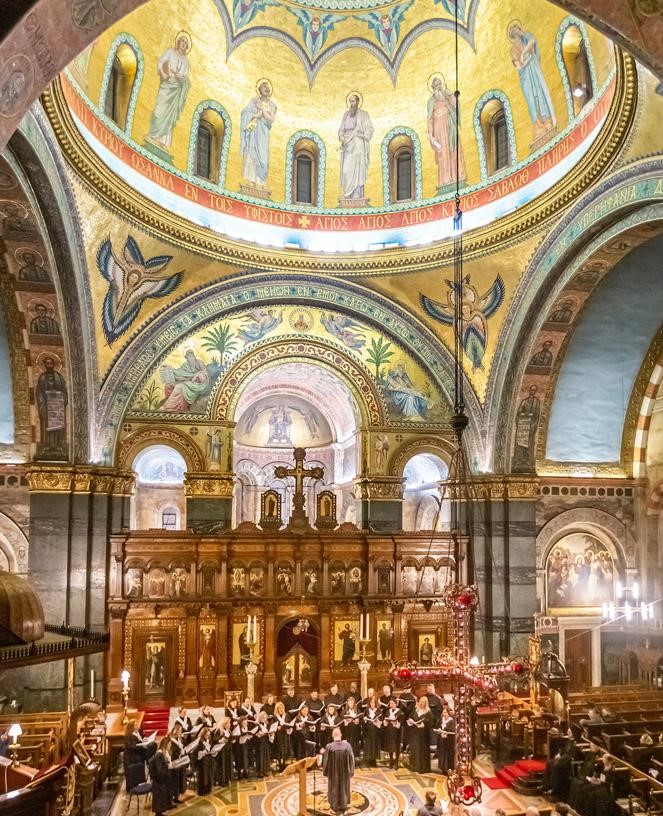
Click on each section to discover more about the Choir’s history:
1848 – 1879
Liturgical Music: The Greek Chapel and Church of Christ the Saviour
Λειτουργική Μουσική: Το Ελληνικό Παρεκκλήσι και η Εκκλησία του Σωτήρος
Since the Greek Orthodox community in London had been worshipping at the Russian Chapel for almost a century, they were greatly inspired by the Russian tradition of polyphonic ecclesiastical music, which was written by contemporary composers such as Berezovsky and Bortniansky.
Therefore from 1848 choral music was a feature in the Greek Orthodox Church in London, when a four-part polyphonic choir was established at the Greek Chapel in Finsbury Circus, under the directorship of Nicholas Kovas.
In 1849 the choir moved to the newly consecrated Church of St. Saviour at London Wall, where Kovas an accomplished musician composed a setting of the Divine Liturgy and later a special Doxology to mark the official visit of King George I of Greece to London. During this initial period the choir consisted of four Italian male singers and two boy choristers.
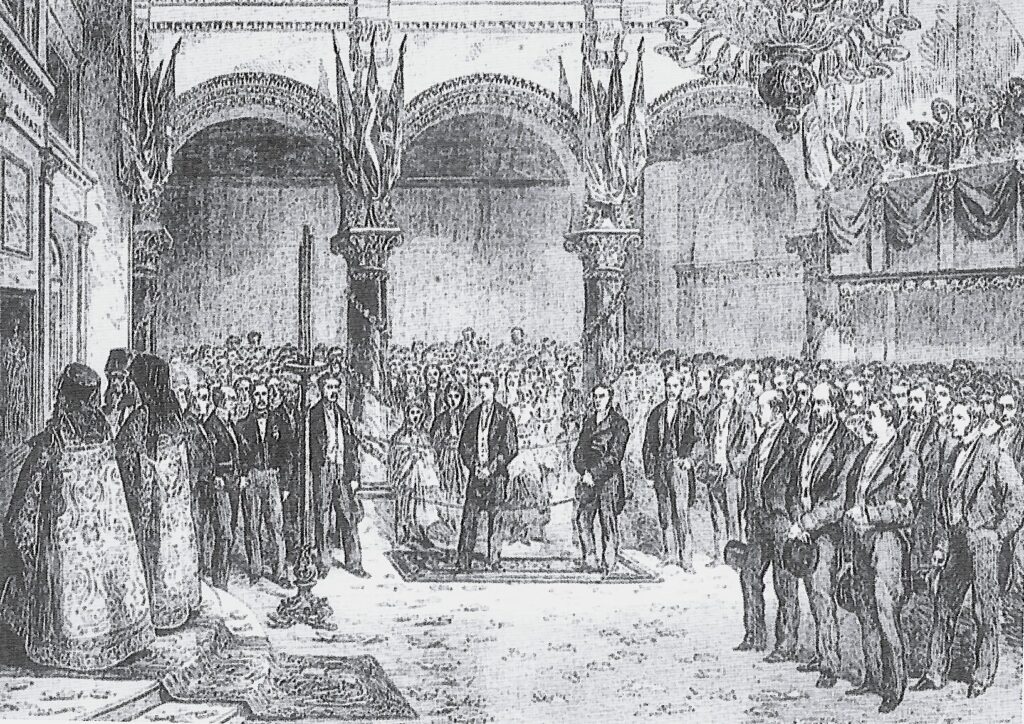
King George I of Greece attending a Doxology at St. Saviour’s Church, London, 1849.
In the 1870s a Supervisory Committee was set up by the Brotherhood to oversee and monitor the style and quality of music used in the church. They were also influenced by the ‘Greek Enlightenment’ movement in Vienna, which had introduced polyphonic choral music into Orthodox church services around 1808, which subsequently flourished throughout the westernised Greek diaspora during the 19th century.
The most renowned composers of early Greek polyphonic church music of the time were a Viennese Greek Ioannis Chaviaras and Austrian musician Benedikt Randhartinger.
Ioannis Chaviaras was born in Chios and was the Head Cantor at the Orthodox Church of the Holy Trinity in Vienna; he was also one of the first to transcribe Byzantine music into Western music notation. Randhartinger was a member of The Boys’ Choir in the Imperial Chapel of the royal palace (the present-day Vienna Boys’ Choir) together with Franz Schubert.
The Chaviaras/Randhartinger partnership composed not only music for the Divine Liturgy, but also for Holy Week, Easter and other hymns covering the liturgical year, which was widely used not only in Vienna and London, but also in other Greek churches around Europe.
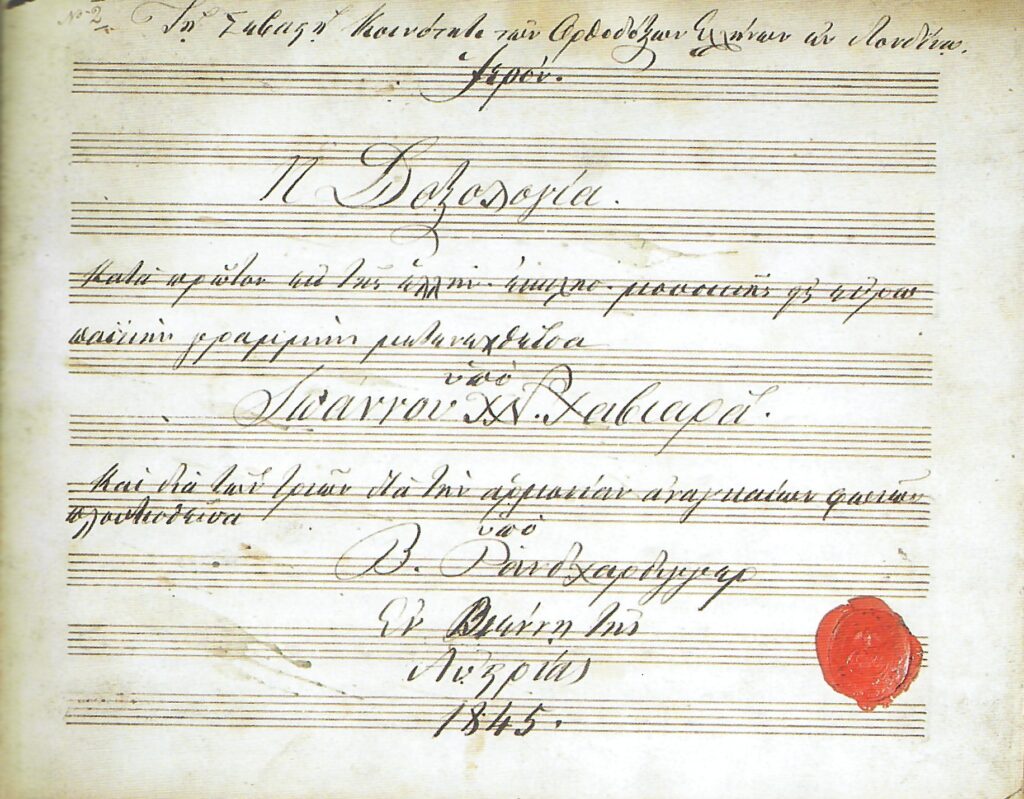
Manuscript of the Orthodox Church Service in Western notation by Ioannis Chaviaras, Vienna, 1845.
1879 – 1969
The Choir at the Church of the Divine Wisdom St. Sophia
Η Χορωδία στον Ναό της Αγίας Σοφίας
With the completion of the new Greek Orthodox Church in Bayswater, the choir moved to its present-day home, where they initially sang from the specialised carved wooden choir stalls designed by John Oldrid Scott, set in the left-hand main wall of the “North” transept.
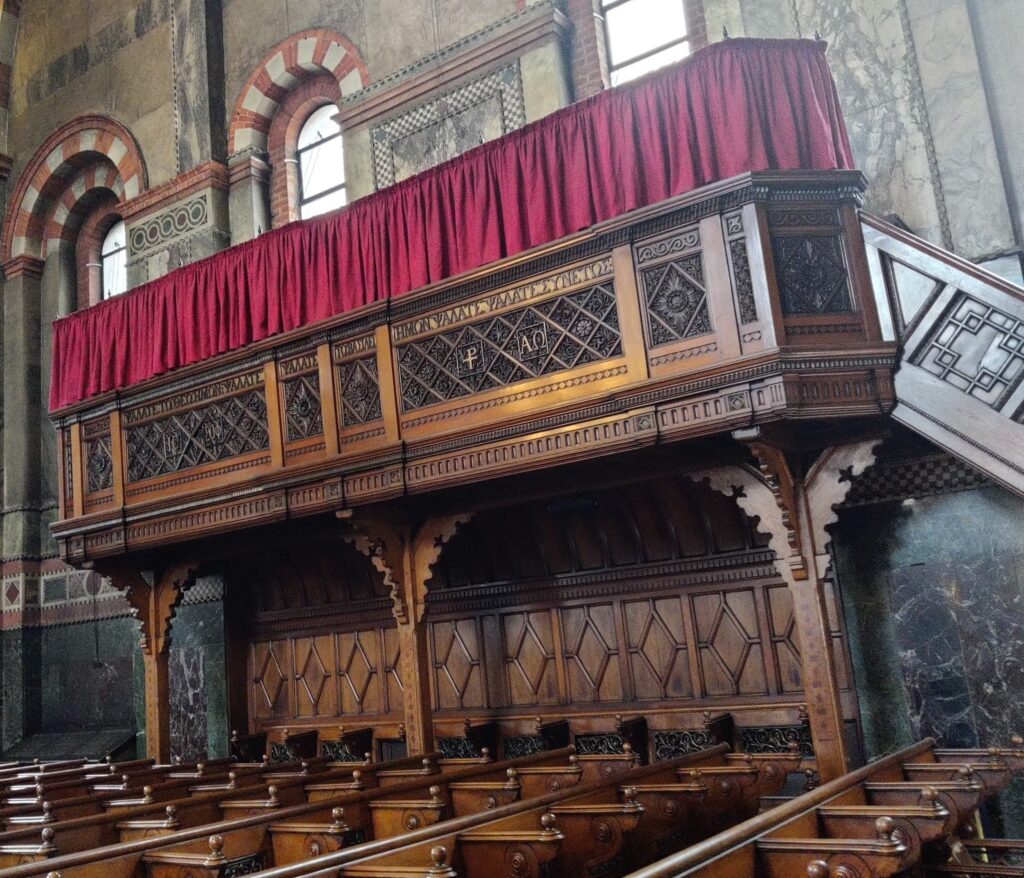
Between 1908 and 1920, the choir was under the directorship of Corfu-born composer and conductor, Napoleon Lambelet, who also composed a setting of the Divine Liturgy commissioned by the Ralli family in 1896. During his tenure as choir-master, women’s voices were added for the first time, until then the high soprano had been sung by boy choristers.
From the 1920s onwards a series of English choir directors were appointed who were both experienced musicians and familiar with the Orthodox rite. Additionally, up until the early 1970s the majority of choir members were usually English professional singers.
It was also during this period that the liturgical music of Themistocles Polycrates (1863-1926) was adopted by St. Sophia’s choir-master W. Hubbert. Polycrates was the most prolific composer of polyphonic ecclesiastical music which forms the cornerstone of the Greek Orthodox choral repertoire. All his music is his own original composition, since he did not draw from traditional Byzantine melodies; and his compositions were not only taken up in London, but adopted by choirs in America, Munich, Paris and Budapest.
The directorship of Ernest Moss between 1940 and 1969 saw the choir evolve beyond the confines of the Cathedral. The occupation of Greece in World War II and the ensuing suffering of its population prompted a series of performances by the choir in aid of the Greek Red Cross between 1942 and 1946.
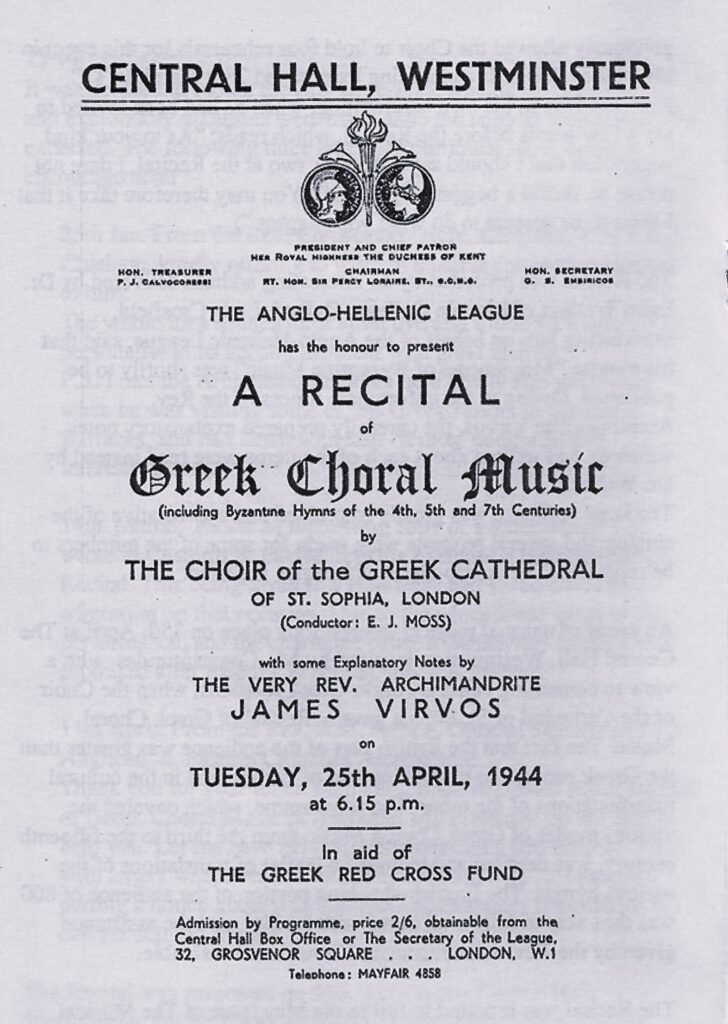
Most notably they performed at a combined Anglo-Greek ‘Service of Intercession for the Suffering People of Greece’, at Westminster Abbey in 1942 and a ‘Service of Thanksgiving at the Liberation of Athens’ at St. Paul’s Cathedral in 1944 attended by some 2000 people, including royalty, Greek and British government ministers. Both Services were also broadcast by the BBC Home and Overseas programmes.
All this activity reflects something of the unity and diversity of the choir and helped to cement Anglo-Greek friendship, as well as bringing Orthodox liturgical music to the attention of a much wider audience in Britain.
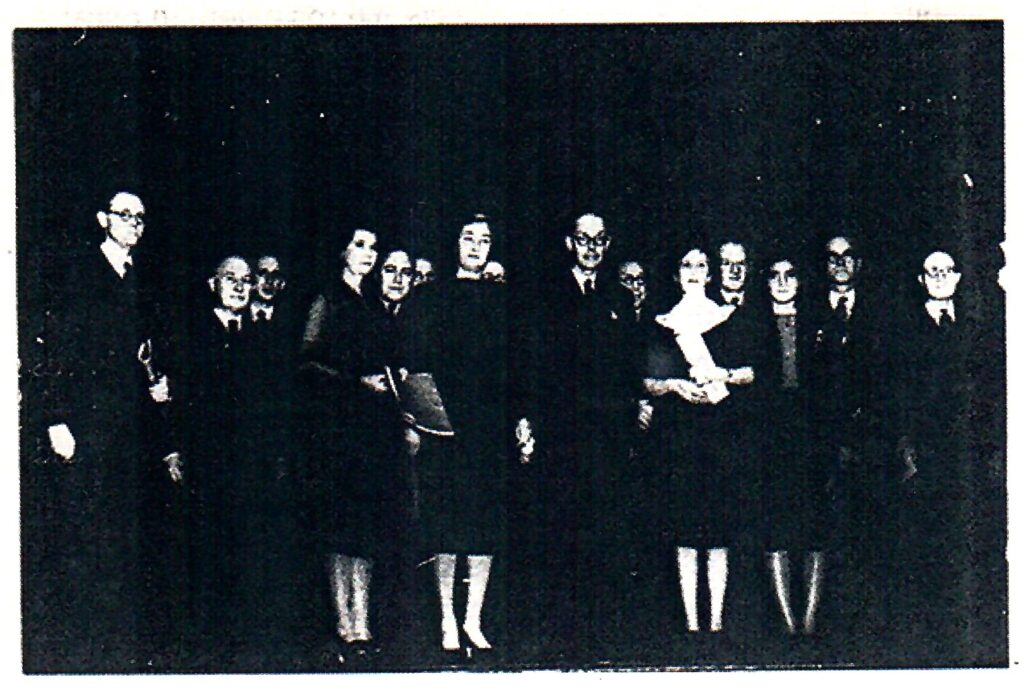
Edward Moss (centre) and the Cathedral’s Choir in February 1945
1970s till the present day
Δεκαετία 1970 μέχρι Σήμερα
Edwin Moss continued as director until he retired in 1969. He was followed by George Trantalidis who introduced a new setting of the Divine Liturgy by another renowned liturgical composer Ioannis Sakellarides.
In 1983 the present-day director Costas Manoras was appointed to head the choir. He has set and arranged many liturgical hymns, including those by Sakellarides and Themistocles Polycrates’ Divine Liturgy for a mixed-voice choir.
In addition to its liturgical commitments, the choir has also appeared on television and at various Orthodox churches all over the United Kingdom. They have also performed in Europe, notably Paris and Prague where they celebrated the Divine Liturgy in the historic Orthodox Cathedral of Saints Cyril and Methodius.
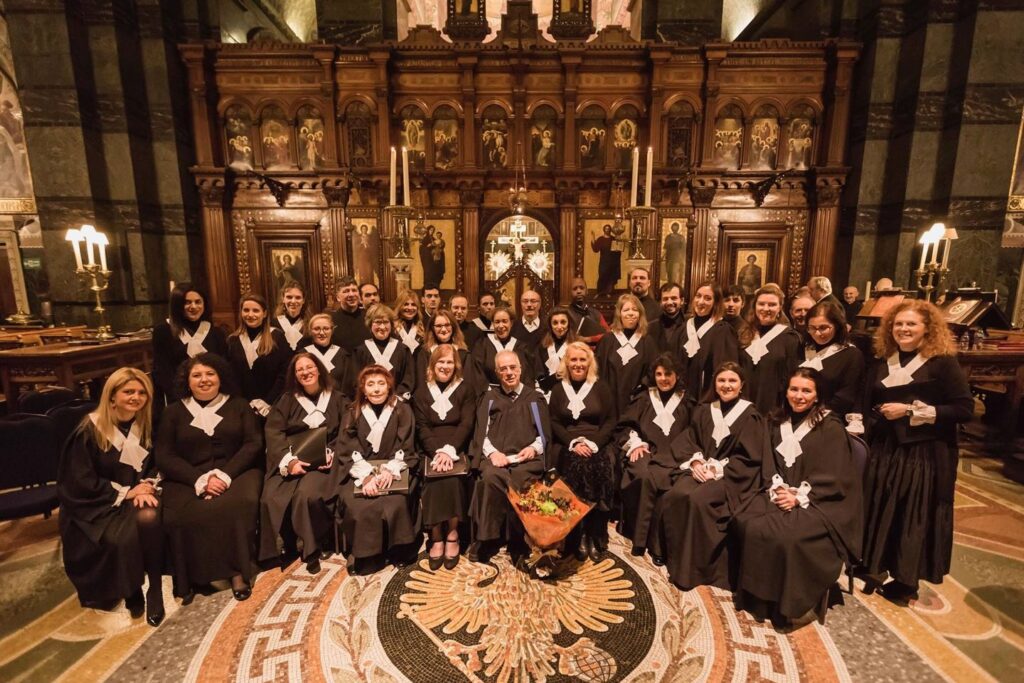
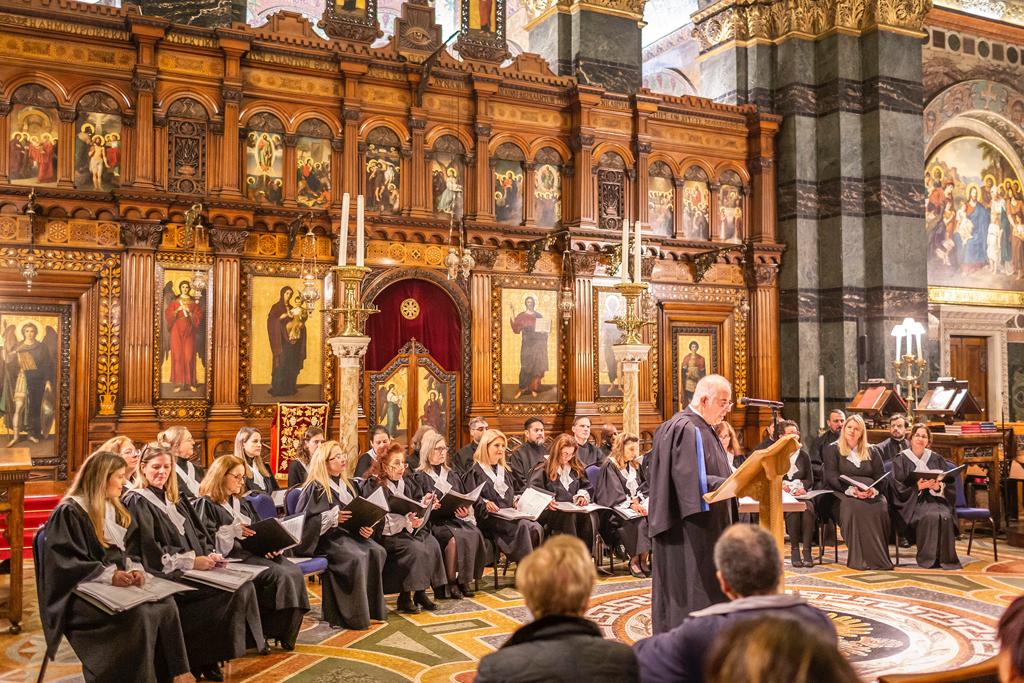
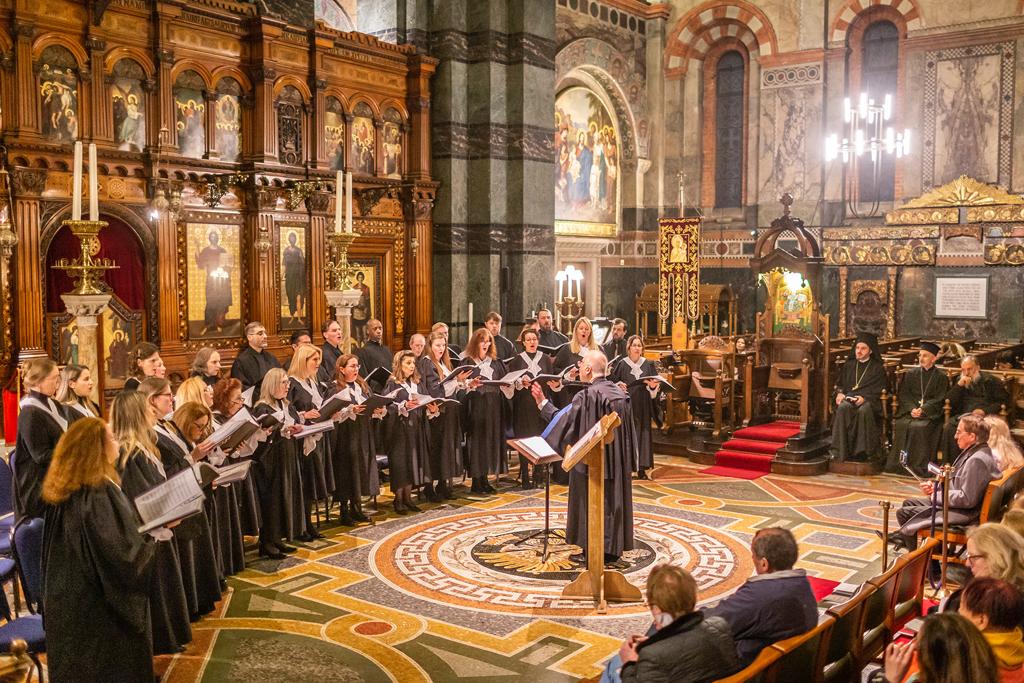
The Choir of Aghia Sophia celebrated its 175th anniversary with a concert of liturgical music at the Cathedral on Friday 24th November 2023
Please click on the video to hear the Cathedral’s Choir
The choir has also recorded a CD, which includes the Cherubic Hymns by Themistocles Polycrates, Lomakin, Arkhangelsky, Bortniansky, Tchaikovsky and Lvov. It is available to purchase at the Cathedral.
Sources: Costas Manoras
Constandinides, Vivienne, Memories of the Choir: During the War and After,
1942-1949 (1988)
Photos: Jessy Pappas Photography,Treasured Offerings: The Legacy of the Greek Orthodox Cathedral of St. Sophia, London (2002)

